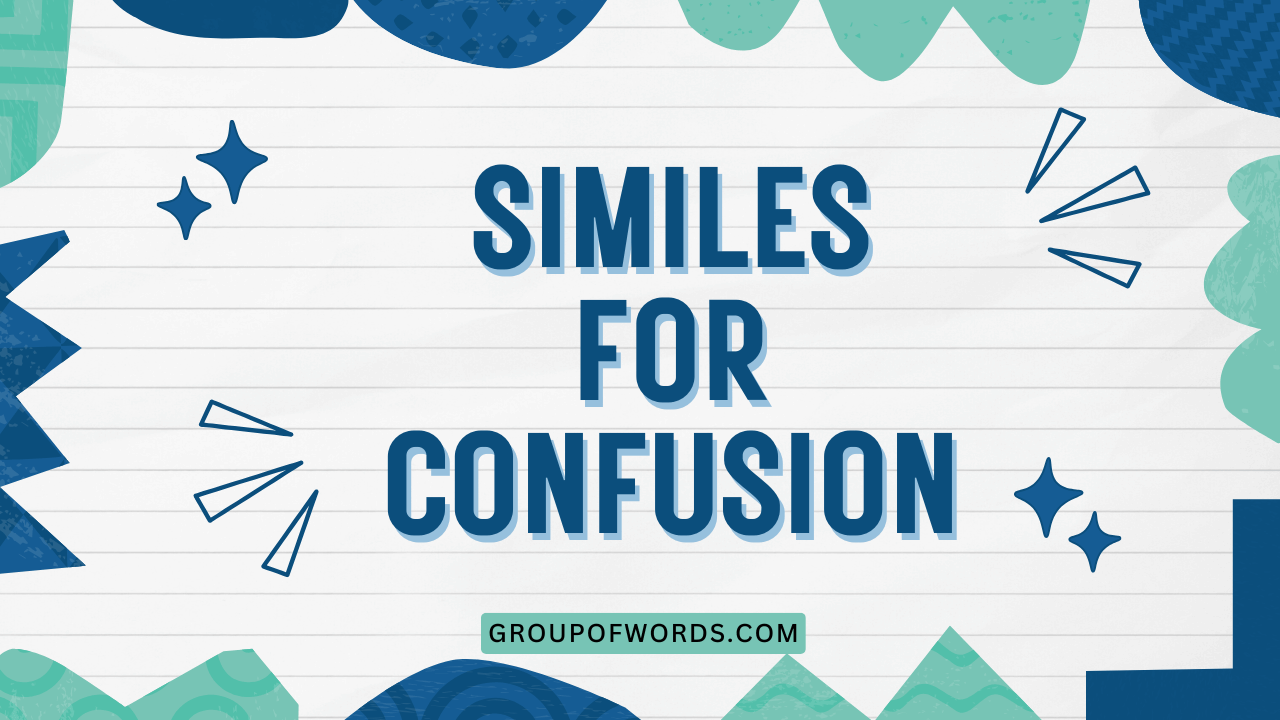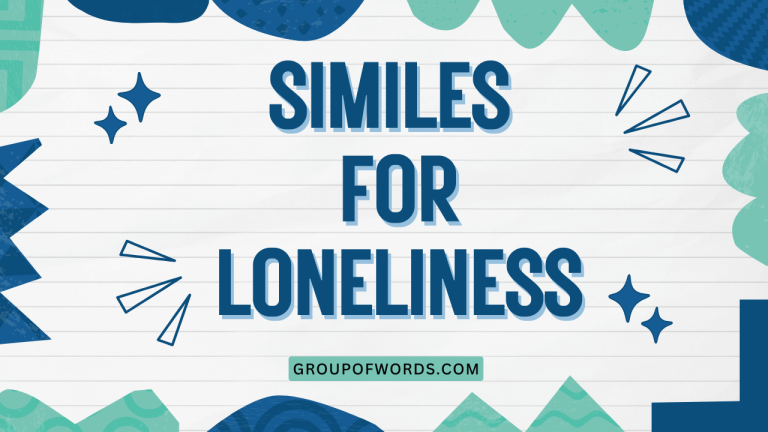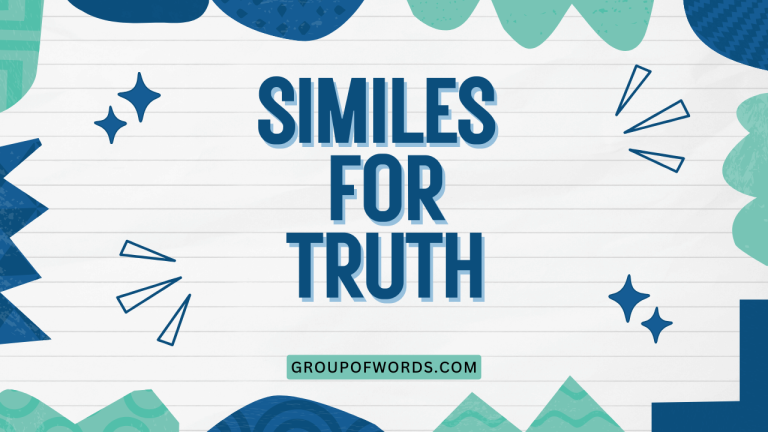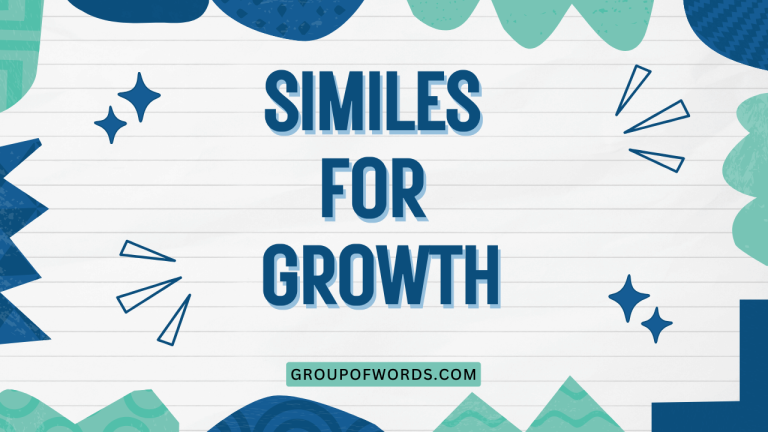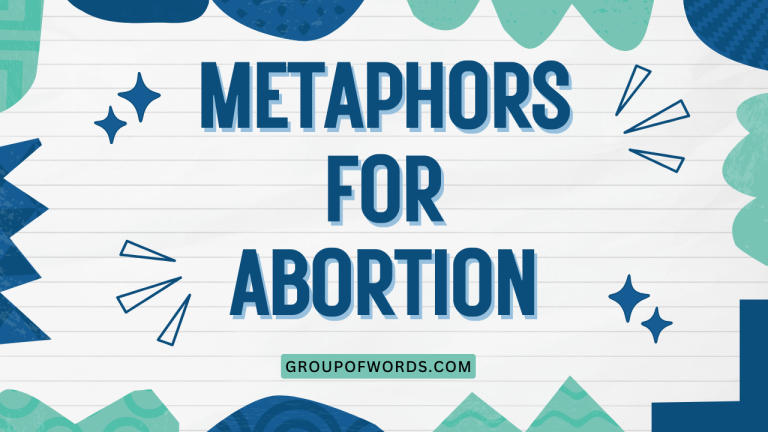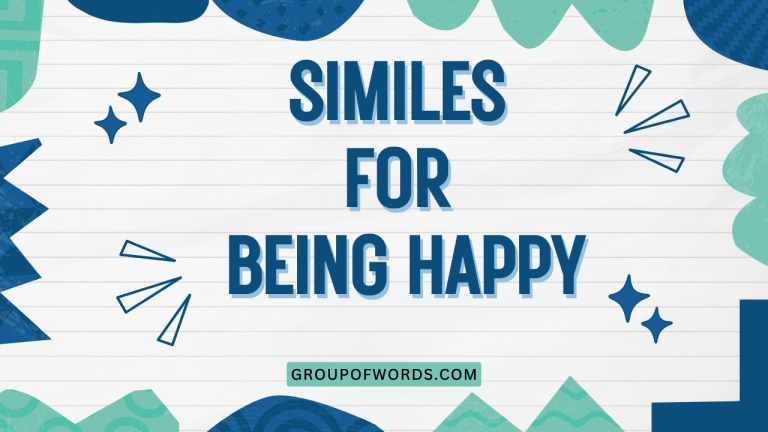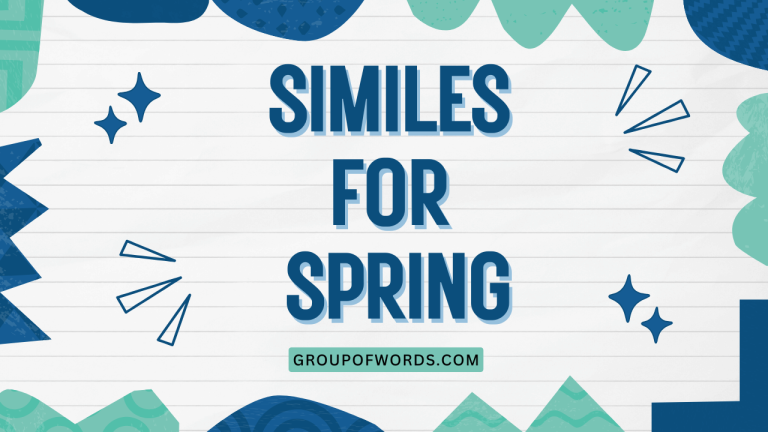Lost in Translation: Mastering Similes for Confusion
Confusion is a universal human experience, and English offers a rich tapestry of expressions to describe it. Among these, similes stand out for their ability to paint vivid pictures of befuddlement using comparisons.
Understanding and using similes effectively not only enhances your descriptive skills but also adds color and nuance to your communication. This article delves into the world of similes for confusion, exploring their structure, variations, and applications.
Whether you’re an English language learner or a seasoned writer, this guide will equip you with the knowledge and tools to master these expressive figures of speech.
This article is designed for English learners, writers, and anyone interested in enriching their vocabulary and understanding of figurative language. By the end of this guide, you’ll be able to recognize, interpret, and create effective similes to convey the feeling of confusion with precision and flair.
So, let’s embark on this journey to unravel the art of using similes to depict confusion.
Table of Contents
- Definition of Similes for Confusion
- Structural Breakdown
- Types of Similes for Confusion
- Examples of Similes for Confusion
- Usage Rules for Similes
- Common Mistakes
- Practice Exercises
- Advanced Topics
- FAQ
- Conclusion
Definition of Similes for Confusion
A simile is a figure of speech that directly compares two different things using the words “like” or “as.” The purpose of a simile is to create a vivid image or to emphasize a particular quality of one thing by associating it with something else that shares that quality. In the context of confusion, similes are used to describe the state of being perplexed, bewildered, or uncertain by comparing it to something else that embodies these qualities.
Similes can make writing and speech more engaging and help the audience better understand the feeling or situation being described. They work by drawing on shared cultural knowledge and experiences, allowing the reader or listener to quickly grasp the intended meaning.
Think of them as shortcuts to understanding, using familiar concepts to illuminate less familiar ones.
For instance, saying someone is “as lost as a sheep in the woods” immediately conveys a sense of disorientation and helplessness. The listener can easily imagine the sheep’s predicament and, by extension, understand the person’s state of confusion.
The effectiveness of a simile lies in its ability to evoke a strong mental image and resonate with the audience’s emotions.
Classification of Similes
Similes are classified as a type of figurative language, falling under the broader category of tropes, which are figures of speech that alter the usual meaning of words. They are closely related to metaphors, but unlike metaphors, similes explicitly state the comparison using “like” or “as.” Metaphors, on the other hand, imply the comparison without using these words (e.g., “He is a deer caught in headlights,” instead of “He is like a deer caught in headlights”).
Function of Similes
The primary function of similes for confusion is to describe the state of being confused in a more evocative and relatable way. They help to:
- Clarify: By comparing confusion to something more concrete and understandable.
- Emphasize: By highlighting the intensity or specific aspects of the confusion.
- Engage: By making the description more interesting and memorable.
- Create imagery: By painting a vivid picture in the reader’s or listener’s mind.
Contexts for Using Similes
Similes for confusion can be used in a wide range of contexts, including:
- Literature: To describe a character’s mental state.
- Everyday conversation: To express personal feelings of confusion.
- Journalism: To explain complex situations in a more accessible way.
- Academic writing: To illustrate abstract concepts.
- Business communication: To convey uncertainty or ambiguity.
Structural Breakdown
A simile consists of three main components:
- The subject: The thing being described (e.g., the person who is confused).
- The linking word: “Like” or “as.”
- The object of comparison: The thing to which the subject is being compared (e.g., a maze, a fog).
The basic formula for a simile is: Subject + Linking Word (like/as) + Object of Comparison
Let’s break this down with an example: “He was as bewildered as a tourist in Tokyo.”
- Subject: He
- Linking word: as
- Object of comparison: a tourist in Tokyo
This simile compares the person’s state of bewilderment to the feeling of being a tourist lost in the vast and complex city of Tokyo. The effectiveness of this simile comes from the shared understanding of Tokyo as a place that can easily disorient visitors.
The order of these components can sometimes be varied for stylistic effect, but the basic structure remains the same. For example, instead of “She felt like a fish out of water,” you could say, “Like a fish out of water, she felt.” However, maintaining the standard structure generally leads to clearer and more easily understood similes.
Types of Similes for Confusion
Similes for confusion can be categorized based on the specific aspect of confusion they emphasize. Here are some common types:
Similes of Disorientation
These similes focus on the feeling of being lost, directionless, or unable to find one’s way, either literally or figuratively. They often involve comparisons to mazes, labyrinths, or unfamiliar environments.
Similes of Mental Fog
These similes describe the feeling of having a clouded mind, where thoughts are unclear, and it’s difficult to think straight. They often use comparisons to fog, mist, or other obscuring elements.
Similes of Bewilderment
These similes emphasize the state of being perplexed, puzzled, or unable to understand something. They often involve comparisons to complex puzzles, riddles, or foreign languages.
Similes of Uncertainty
These similes highlight the feeling of doubt, indecision, or lack of confidence. They often involve comparisons to shaky ground, unpredictable weather, or unreliable sources.
Examples of Similes for Confusion
To further illustrate the use of similes for confusion, here are several examples categorized by the types discussed above.
Examples of Disorientation
The following table illustrates similes that emphasize disorientation. Each example paints a vivid picture of being lost, either physically or mentally.
| Simile | Explanation |
|---|---|
| As lost as a sheep in the woods | Conveys a sense of complete disorientation and vulnerability. |
| Like a rat in a maze | Suggests a frantic and futile search for a way out. |
| As disoriented as a compass in a magnetic field | Implies a complete loss of direction and bearings. |
| Like a ship without a rudder | Describes a lack of control and guidance. |
| As adrift as a boat without oars | Suggests being aimless and without means to navigate. |
| Like a traveler without a map | Conveys the feeling of being unprepared and lost in an unfamiliar place. |
| As confused as a chameleon in a bag of Skittles | Highlights the overwhelming and chaotic nature of the situation. |
| Like a lost sock in the dryer | Suggests a feeling of being misplaced and unaccounted for. |
| As perplexed as a tourist in a foreign city | Implies a sense of unfamiliarity and difficulty understanding the surroundings. |
| Like a blind man in a dark room | Describes a complete lack of understanding or awareness. |
| As bewildered as a newborn calf | Conveys a sense of innocence and complete lack of experience. |
| Like a fish out of water | Suggests being in an environment where one doesn’t belong or understand the rules. |
| As muddled as directions given by a toddler | Implies a lack of clarity and coherence. |
| Like a needle in a haystack | Describes a feeling of hopelessness in finding something specific. |
| As aimless as a tumbleweed in the desert | Suggests a lack of purpose or direction. |
| Like a cloud lost in the sky | Conveys a feeling of being insignificant and without a clear path. |
| As discombobulated as a clown in a library | Highlights the incongruity and disorientation of the situation. |
| Like a headless chicken running around | Suggests frantic, undirected activity. |
| As lost as last year’s Easter egg | Implies complete and utter disappearance and a sense of being forgotten. |
| Like a tree uprooted in a storm | Describes a feeling of being displaced and destabilized. |
| As mixed up as alphabet soup | Implies a jumbled and confusing state of affairs. |
| Like a lone wolf without a pack | Suggests a feeling of isolation and lack of belonging. |
| As bewildered as a librarian at a rock concert | Highlights the incongruity and disorientation of the situation. |
Examples of Mental Fog
This table presents similes that illustrate the feeling of mental fog, where thoughts are unclear and thinking is difficult.
| Simile | Explanation |
|---|---|
| As foggy as a London morning | Conveys a sense of mental obscurity and lack of clarity. |
| Like a mind full of cobwebs | Suggests a cluttered and unclear thought process. |
| As hazy as a dream | Implies a lack of clarity and a sense of unreality. |
| Like trying to see through a frosted window | Describes the difficulty of perceiving things clearly. |
| As murky as muddy water | Suggests a lack of transparency and understanding. |
| Like wading through treacle | Conveys the feeling of moving slowly and with great effort through one’s thoughts. |
| As unclear as a broken radio signal | Implies a lack of coherent communication or understanding. |
| Like a brain full of static | Suggests a noisy and chaotic mental state. |
| As blank as a whiteboard after a brainstorming session | Implies a feeling of emptiness and lack of ideas. |
| Like trying to grasp smoke | Describes the futility of trying to understand something elusive. |
| As opaque as a brick wall | Conveys a sense of impenetrability and lack of understanding. |
| Like a thought lost in the wind | Suggests a fleeting and elusive idea. |
| As indecipherable as ancient hieroglyphs | Implies a complete lack of understanding and the need for expertise to interpret. |
| Like a puzzle with missing pieces | Describes the frustration of not having all the information needed to understand. |
| As blurred as a photograph out of focus | Suggests a lack of clarity and precision. |
| Like a mind swimming in molasses | Conveys the feeling of slow and sticky thought processes. |
| As scrambled as an egg | Implies a jumbled and disorganized mental state. |
| Like a computer with a virus | Suggests impaired function and corrupted information. |
| As muddled as a badly translated sentence | Implies a lack of clarity and coherence due to poor communication. |
| Like trying to assemble furniture without instructions | Describes the frustration of trying to understand something without guidance. |
| As incomprehensible as quantum physics | Conveys a sense of overwhelming complexity and difficulty. |
| Like a tangled ball of yarn | Suggests a confused and convoluted state of mind. |
| As perplexing as a riddle wrapped in an enigma | Implies a deep and layered mystery. |
Examples of Bewilderment
The following table provides similes that emphasize the state of being bewildered, puzzled, or unable to understand something.
| Simile | Explanation |
|---|---|
| As puzzled as a dog looking at a card trick | Conveys a sense of complete incomprehension. |
| Like trying to understand a foreign language | Suggests a lack of knowledge and the inability to communicate. |
| As baffled as a scientist by an anomaly | Implies a sense of professional confusion and unexpectedness. |
| Like a deer caught in headlights | Describes being frozen and unable to react due to sudden confusion. |
| As dumbfounded as a magician revealing his secrets | Suggests a sense of disbelief and astonishment. |
| Like trying to solve a Rubik’s Cube blindfolded | Conveys the extreme difficulty and frustration of the task. |
| As perplexed as a student facing a complex equation | Implies a sense of academic confusion and challenge. |
| Like reading instructions written in code | Describes the inability to understand due to unfamiliarity. |
| As mystified as a child watching a magic show | Implies a sense of wonder and incomprehension. |
| Like trying to navigate a maze in the dark | Conveys the difficulty of finding one’s way without guidance. |
| As bewildered as a time traveler in the present | Suggests a sense of being out of sync with the current environment. |
| Like listening to a conversation in a language you don’t know | Describes the inability to understand due to linguistic barriers. |
| As flummoxed as a politician caught in a lie | Implies a sense of being caught off guard and unable to respond effectively. |
| Like trying to find a black cat in a coal cellar | Describes a hopeless search in a dark and confusing environment. |
| As stumped as a detective with no clues | Suggests a lack of information and the inability to solve a mystery. |
| Like trying to argue with a brick wall | Conveys the futility of trying to reason with something unyielding. |
| As perplexed as a cat trying to understand a vacuum cleaner | Implies a sense of incomprehension and fear. |
| Like deciphering a doctor’s handwriting | Describes the difficulty in understanding due to illegibility. |
| As flustered as a chef who’s forgotten the recipe | Implies a sense of panic and confusion in a high-pressure situation. |
| Like a mime trying to explain quantum physics | Conveys the difficulty of expressing complex concepts without words. |
Examples of Uncertainty
This table presents similes that highlight the feeling of doubt, indecision, or lack of confidence.
| Simile | Explanation |
|---|---|
| As shaky as a leaf in the wind | Conveys a sense of instability and vulnerability. |
| Like walking on thin ice | Suggests a precarious situation where one wrong move could lead to disaster. |
| As uncertain as the weather forecast | Implies a lack of predictability and reliability. |
| Like trying to predict the lottery numbers | Describes the futility of trying to foresee the unpredictable. |
| As doubtful as a skeptic at a séance | Suggests a strong disbelief and skepticism. |
| Like navigating without a compass | Conveys the difficulty of finding one’s way without guidance. |
| As hesitant as a child learning to ride a bike | Implies a lack of confidence and fear of failure. |
| Like betting on a horse with no form | Describes a risky and ill-advised decision. |
| As ambiguous as a fortune cookie message | Suggests a lack of clarity and open to interpretation. |
| Like building a house on sand | Conveys the idea of a foundation that is weak and unreliable. |
| As wavering as a flame in a draft | Implies a lack of stability and easily influenced. |
| Like trying to catch smoke with your bare hands | Describes the futility of trying to grasp something elusive. |
| As unsure as a tightrope walker without a safety net | Conveys a sense of high risk and vulnerability. |
| Like gambling with loaded dice | Suggests a situation where the odds are unfairly stacked against you. |
| As precarious as a house of cards | Implies a fragile and easily collapsing structure. |
| Like trying to hold water in your hands | Describes the difficulty of retaining something that is inherently unstable. |
| As tentative as a first step on a new path | Suggests a lack of confidence and uncertainty about the future. |
| Like investing in a volatile market | Conveys the risk and unpredictability of a financial decision. |
| As indecisive as a shopper in a crowded store | Implies being overwhelmed by choices and unable to make a decision. |
| Like trusting a weather vane in a hurricane | Describes the unreliability of a source of information. |
Usage Rules for Similes
Using similes effectively requires an understanding of certain rules and guidelines:
- Clarity: The comparison should be clear and easily understood. Avoid obscure or overly complex comparisons. The audience should immediately grasp the connection between the subject and the object of comparison.
- Relevance: The object of comparison should share a relevant quality with the subject. The similarity should be meaningful and contribute to the overall description.
- Originality: While common similes can be effective, strive for originality to make your writing or speech more engaging. Overused similes can become clichés and lose their impact.
- Context: The simile should be appropriate for the context. Consider the tone, audience, and purpose of your communication.
- Avoid mixed metaphors: Ensure that the simile is consistent with the overall imagery and does not create conflicting or nonsensical comparisons.
For example, instead of saying “He was as confused as a cat,” which is vague, you could say “He was as confused as a cat trying to climb a tree,” which is more specific and paints a clearer picture.
Exceptions to the Rules
While the above rules are generally applicable, there are exceptions. Sometimes, breaking the rules can be done intentionally for stylistic effect, such as creating humor or irony.
However, this should be done with care and a clear understanding of the potential impact on the audience.
Common Mistakes
Here are some common mistakes to avoid when using similes:
| Incorrect | Correct | Explanation |
|---|---|---|
| He was confused like happiness. | He was as confused as a student who missed the lecture. | The comparison should be concrete and understandable. “Happiness” is an abstract concept and doesn’t provide a clear comparison. |
| She felt as confused as a building. | She felt as confused as someone lost in a new city. | The object of comparison should be something that can experience confusion. A building cannot experience confusion. |
| He was like confused. | He was like a detective without a clue. | The linking word “like” or “as” must be followed by a noun or noun phrase that serves as the object of comparison. |
| She was as confused as always. | She was as confused as someone trying to assemble IKEA furniture without instructions. | The comparison needs to provide a specific image or feeling of confusion. “Always” is too vague. |
| He was as confused as the color blue. | He was as confused as a cartographer without a map. | The object of comparison should have a clear connection to confusion. The color blue has no inherent connection to confusion. |
Practice Exercises
Test your understanding of similes for confusion with these exercises.
Exercise 1: Identify the Simile
Identify the simile in each sentence and explain what it means.
| Question | Answer |
|---|---|
| 1. He was as lost as a tourist without a map. | Simile: “as lost as a tourist without a map.” Meaning: He was completely disoriented and didn’t know where to go. |
| 2. Her mind was like a tangled ball of yarn. | Simile: “like a tangled ball of yarn.” Meaning: Her thoughts were confused and disorganized. |
| 3. The instructions were as clear as mud. | Simile: “as clear as mud.” Meaning: The instructions were very difficult to understand. |
| 4. He felt like a fish out of water in the meeting. | Simile: “like a fish out of water.” Meaning: He felt uncomfortable and out of place. |
| 5. The situation was as perplexing as a riddle. | Simile: “as perplexing as a riddle.” Meaning: The situation was very confusing and difficult to understand. |
| 6. He was as bewildered as a newborn baby. | Simile: “as bewildered as a newborn baby.” Meaning: He was completely confused and unaware of what was happening. |
| 7. The explanation was like trying to grasp smoke. | Simile: “like trying to grasp smoke.” Meaning: The explanation was elusive and difficult to understand. |
| 8. She felt as confused as a chameleon in a plaid room. | Simile: “as confused as a chameleon in a plaid room.” Meaning: She felt overwhelmed and disoriented by the chaotic environment. |
| 9. His thoughts were as foggy as a London morning. | Simile: “as foggy as a London morning.” Meaning: His thoughts were unclear and difficult to process. |
| 10. He looked as puzzled as a dog staring at a ceiling fan. | Simile: “as puzzled as a dog staring at a ceiling fan.” Meaning: He looked completely confused and unable to understand what he was seeing. |
Exercise 2: Complete the Simile
Complete the following similes with an appropriate ending that describes confusion.
| Question | Answer |
|---|---|
| 1. He was as lost as… | …a sheep in the woods. |
| 2. Her mind was like… | …a maze with no exit. |
| 3. The instructions were as clear as… | …a snowstorm. |
| 4. He felt like… | …a stranger in a strange land. |
| 5. The situation was as perplexing as… | …a paradox. |
| 6. He was as bewildered as… | …someone waking up in a different century. |
| 7. The explanation was like… | …trying to catch the wind. |
| 8. She felt as confused as… | …a librarian at a rave. |
| 9. His thoughts were as foggy as… | …a swamp at dawn. |
| 10. He looked as puzzled as… | …a tourist reading a map upside down. |
Exercise 3: Write Your Own Similes
Write your own simile for each of the following sentences using “like” or “as.”
- He was very confused about the new policy.
- She couldn’t understand the complex instructions.
- The situation was extremely perplexing.
- His thoughts were unclear and disorganized.
- He felt completely out of place.
Possible Answers:
- He was as confused as a student who walked into the wrong class.
- She couldn’t understand the complex instructions; they were like hieroglyphics to her.
- The situation was extremely perplexing, as intricate as a spider’s web.
- His thoughts were unclear and disorganized, like a jumbled pile of mismatched socks.
- He felt completely out of place, like a penguin in the desert.
Advanced Topics
For advanced learners, consider exploring the following:
- Extended similes: Developing a single simile over multiple sentences or paragraphs to create a more elaborate and impactful comparison.
- The interplay of simile and metaphor: How these figures of speech can be combined to create richer and more nuanced descriptions.
- Cultural variations in similes: How similes differ across cultures and languages, reflecting different experiences and perspectives.
- Using similes in different genres: Adapting the use of similes to suit the specific conventions and expectations of different writing genres (e.g., poetry, fiction, academic writing).
Understanding the subtleties of simile usage can elevate your writing and communication skills to a higher level, allowing you to express complex ideas with greater precision and artistry. By experimenting with different types of similes and exploring their potential in various contexts, you can unlock the full power of this versatile figure of speech.
FAQ
- What is the difference between a simile and a metaphor?
A simile explicitly compares two things using “like” or “as,” while a metaphor implies the comparison without using these words. For example, “He is like a lion” (simile) vs. “He is a lion” (metaphor). - Can a simile be too obvious?
Yes, overused or cliché similes can lose their impact and make your writing sound unoriginal. Strive for fresh and creative comparisons. - How can I make my similes more effective?
Choose comparisons that are clear, relevant, and evocative. Consider the context and audience, and aim for originality. - Is it okay to use similes in formal writing?
Yes, similes can be used in formal writing, but use them judiciously and ensure they are appropriate for the tone and purpose of the writing. - What are some common clichés to avoid when writing about confusion?
Avoid overused similes like “as clear as mud,” “as lost as a sheep,” and “like a deer in headlights.” - How do I know if my simile is effective?
A good simile should create a vivid image in the reader’s mind and help them understand the concept or feeling you are trying to convey. Ask for feedback from others to see if your similes are effective. - Can I use similes to describe abstract concepts?
Yes, similes can be very effective for describing abstract concepts by comparing them to something more concrete and relatable. - Are similes only used in writing?
No, similes are used in both writing and speech. They are a common way to add color and emphasis to everyday conversations.
Conclusion
Mastering similes for confusion is a valuable skill that can significantly enhance your ability to communicate effectively and expressively. By understanding the structure, types, and usage rules of similes, you can create vivid and memorable descriptions of confusion, whether in writing or speech.
Remember to strive for clarity, relevance, and originality in your comparisons, and avoid common mistakes that can weaken your message.
Continue to practice identifying and creating similes in various contexts. Pay attention to how other writers and speakers use similes to convey complex emotions and ideas.
By honing your skills in this area, you’ll be able to add depth, nuance, and impact to your communication, making it more engaging and persuasive. So, go forth and use similes to illuminate the world of confusion with creativity and precision!
